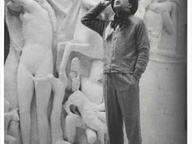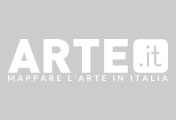Enrico Castellani. Le Superfici e i Fondamenti

Enrico Castellani. Le Superfici e i Fondamenti, Loom Gallery, Milano
Dal 29 October 2021 al 31 December 2021
Milano
Luogo: Loom Gallery
Indirizzo: Via Lazzaretto 15
Orari: Martedì / Sabato 14-19 o su appuntamento
Curatori: Tommaso Trini
Telefono per informazioni: +39 02 87064323
E-Mail info: ask@loomgallery.com
Sito ufficiale: http://www.loomgallery.com
LOOM gallery e Fondazione Enrico Castellani presentano, a distanza di vent’anni dall’ultima personale a Milano:“ Enrico Castellani - Le Superfici e i Fondamenti”, a cura di Tommaso Trini.
Per l’occasione verranno esposte opere atipiche, a tratti complementari e appartenenti a diversi ambiti, a sotto-lineare come l’intera pratica di Castellani si sia sviluppata all’interno di un contesto di ricerca nel quale dall’ar-chitettura e dall’ingegneria si passa alla matematica e alla fisica.
Nello specifico due grandi tele bianche di foggia triangolare, la cui superficie è mossa al centro da un doppio re-gistro di rilievi verticali, entro il quale si sviluppano altrettanti avvallamenti, fanno da eco alle due imponenti scul-ture lignee, di chiara ispirazione nautica, composte da travi a sezione quadrata bilanciate tra loro tramite volantid’acciaio e sartie allocate a piccole bitte. Il corpo di lavori è stato realizzato in occasione della mostra personalealla Galleria Civica di Trento del 1999 e da allora non sono mai più stati presentati assieme.
Distinti e apparentemente distanti – appartenenti all’ambito del rilievo e della tela estroflessa i primi due elabo-rati, chiaramente riconducibili ad un contesto scultoreo, installativo e costruttivo gli altri – questi lavori, proposti in dialogo serrato e sagacemente licenziati considerando il possibile capovolgimento delle parti, mostrano comel’intera vicenda artistica di Castellani si regga sulla concreta determinazione di campi di forze opposte che, come le facce di una medaglia, si affermano e si negano simultaneamente, sino al raggiungimento dell’equilibrio indi-scutibile.
La tensione che governa le superfici a rilievo non è estranea a quella sulla quale si reggono le sculture presenta- te. Infatti rivelano chiaramente i dati costruttivi e strutturali e il processo stesso che porta alla loro formazione e,come le tele estroflesse, non si pongono in qualità di immagini, sottraendosi alle definizioni più solite, per espan- dersi oltre i limiti e relazionarsi con lo spazio in modo estremamente efficace; determinandolo estrutturandolo sino a rendere l’evidenza del vuoto parte integrante dell’opera.
Non a caso, come scrive Tommaso Trini nel saggio redatto per questa occasione: “L’opera d’arte di Castellani non silascia scoprire, si espande. E se già Eraclito tramandò che «la natura delle cose ama celarsi», e se tutt’oggi icosmologi valutano oscure là un’energia e qui una materia, converrà aggiornare i linguaggi secondo natura. Nébasterà un’ode alla luce prodotta da tale artista a vederci chiaro. O luce d’arte alquanto rara schiarisci i passidiscreti delle onde e/o particelle che irrorano tra flessioni e rilievi le tue superfici nella loro bellezza! Secondoprecisi fondamenti iconici Castellani condivide la dualità di superfici e/o vuoto interno: il violino del suo presti-gio. Tali corpi estro/intro/flessi sono strumenti dell’osservare aptico, quando pare di toccarli con gli occhi e farlirisuonare; senza cornici, aprono campi di spazio ed energia. Le superfici chiuse dialogano coi fondamenti aperticome passi sulla luna. Le superfici emanano più luce se animate da cavità o fondali che le sensibilizzano, fuquesto l’atout del giovane Enrico. La sua arte è perciò espansa sia in ogni singola superficie a corpo oscuro, trasculture, ambienti, eventi, concetti, excursus di pregio, finora meno frequentati.”
La mostra, realizzata in stretta collaborazione con la Fondazione Enrico Castellani, è accompagnata da un testo diTommaso Trini nel quale, per la prima volta, vengono considerate le implicazioni e lo sconfinamento in ambiti ignoti che il lavoro di Castellani contempla; partendo dalle fondamenta sulle quali si regge il suo pensiero e arri- vando aconsiderare le possibili connessioni con altre discipline.
Enrico Castellani (1930 - 2017) nel 1956 si laurea in architettura a Bruxelles; rientrato in Italia nel 1959 fonda larivista e la galleria Azimut/h con Piero Manzoni. Nello stesso anno realizza la prima superficie a rilievo dandovita ad una delle esperienze più significative del dopoguerra. Tra le esposizioni più importanti degli ultimi annisono da ricordare quelle alla Fondazione Prada a Milano nel 2001, all’Università di Cambridge nel 2002, al PuskinMuseum di Mosca nel 2005, a Ca’ Pesaro a Venezia e al Mesée d’Art Moderne a Saint-Etienne nel 2013.
Per l’occasione verranno esposte opere atipiche, a tratti complementari e appartenenti a diversi ambiti, a sotto-lineare come l’intera pratica di Castellani si sia sviluppata all’interno di un contesto di ricerca nel quale dall’ar-chitettura e dall’ingegneria si passa alla matematica e alla fisica.
Nello specifico due grandi tele bianche di foggia triangolare, la cui superficie è mossa al centro da un doppio re-gistro di rilievi verticali, entro il quale si sviluppano altrettanti avvallamenti, fanno da eco alle due imponenti scul-ture lignee, di chiara ispirazione nautica, composte da travi a sezione quadrata bilanciate tra loro tramite volantid’acciaio e sartie allocate a piccole bitte. Il corpo di lavori è stato realizzato in occasione della mostra personalealla Galleria Civica di Trento del 1999 e da allora non sono mai più stati presentati assieme.
Distinti e apparentemente distanti – appartenenti all’ambito del rilievo e della tela estroflessa i primi due elabo-rati, chiaramente riconducibili ad un contesto scultoreo, installativo e costruttivo gli altri – questi lavori, proposti in dialogo serrato e sagacemente licenziati considerando il possibile capovolgimento delle parti, mostrano comel’intera vicenda artistica di Castellani si regga sulla concreta determinazione di campi di forze opposte che, come le facce di una medaglia, si affermano e si negano simultaneamente, sino al raggiungimento dell’equilibrio indi-scutibile.
La tensione che governa le superfici a rilievo non è estranea a quella sulla quale si reggono le sculture presenta- te. Infatti rivelano chiaramente i dati costruttivi e strutturali e il processo stesso che porta alla loro formazione e,come le tele estroflesse, non si pongono in qualità di immagini, sottraendosi alle definizioni più solite, per espan- dersi oltre i limiti e relazionarsi con lo spazio in modo estremamente efficace; determinandolo estrutturandolo sino a rendere l’evidenza del vuoto parte integrante dell’opera.
Non a caso, come scrive Tommaso Trini nel saggio redatto per questa occasione: “L’opera d’arte di Castellani non silascia scoprire, si espande. E se già Eraclito tramandò che «la natura delle cose ama celarsi», e se tutt’oggi icosmologi valutano oscure là un’energia e qui una materia, converrà aggiornare i linguaggi secondo natura. Nébasterà un’ode alla luce prodotta da tale artista a vederci chiaro. O luce d’arte alquanto rara schiarisci i passidiscreti delle onde e/o particelle che irrorano tra flessioni e rilievi le tue superfici nella loro bellezza! Secondoprecisi fondamenti iconici Castellani condivide la dualità di superfici e/o vuoto interno: il violino del suo presti-gio. Tali corpi estro/intro/flessi sono strumenti dell’osservare aptico, quando pare di toccarli con gli occhi e farlirisuonare; senza cornici, aprono campi di spazio ed energia. Le superfici chiuse dialogano coi fondamenti aperticome passi sulla luna. Le superfici emanano più luce se animate da cavità o fondali che le sensibilizzano, fuquesto l’atout del giovane Enrico. La sua arte è perciò espansa sia in ogni singola superficie a corpo oscuro, trasculture, ambienti, eventi, concetti, excursus di pregio, finora meno frequentati.”
La mostra, realizzata in stretta collaborazione con la Fondazione Enrico Castellani, è accompagnata da un testo diTommaso Trini nel quale, per la prima volta, vengono considerate le implicazioni e lo sconfinamento in ambiti ignoti che il lavoro di Castellani contempla; partendo dalle fondamenta sulle quali si regge il suo pensiero e arri- vando aconsiderare le possibili connessioni con altre discipline.
Enrico Castellani (1930 - 2017) nel 1956 si laurea in architettura a Bruxelles; rientrato in Italia nel 1959 fonda larivista e la galleria Azimut/h con Piero Manzoni. Nello stesso anno realizza la prima superficie a rilievo dandovita ad una delle esperienze più significative del dopoguerra. Tra le esposizioni più importanti degli ultimi annisono da ricordare quelle alla Fondazione Prada a Milano nel 2001, all’Università di Cambridge nel 2002, al PuskinMuseum di Mosca nel 2005, a Ca’ Pesaro a Venezia e al Mesée d’Art Moderne a Saint-Etienne nel 2013.
SCARICA IL COMUNICATO IN PDF
COMMENTI

-
 Dal 8 November 2025 al 11 January 2026
Venezia | Museo Correr
Dal 8 November 2025 al 11 January 2026
Venezia | Museo Correr
CARATTERI. Calligrafia e tipografia: Corea del Sud e Stati Uniti
-
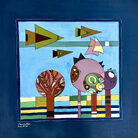 Dal 8 November 2025 al 22 February 2026
Brescia | Museo di Santa Giulia
Dal 8 November 2025 al 22 February 2026
Brescia | Museo di Santa Giulia
Material for an Exhibition. Storie, memorie e lotte dalla Palestina e dal Mediterraneo
-
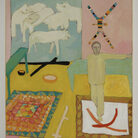 Dal 8 November 2025 al 18 January 2026
Perugia | Perugia, Spoleto e Gubbio
Dal 8 November 2025 al 18 January 2026
Perugia | Perugia, Spoleto e Gubbio
Mimmo Paladino. Antologica
-
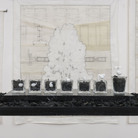 Dal 7 November 2025 al 25 January 2026
Roma | Museo Carlo Bilotti Aranciera di Villa Borghese
Dal 7 November 2025 al 25 January 2026
Roma | Museo Carlo Bilotti Aranciera di Villa Borghese
Silvia Scaringella. Deus sive natura
-
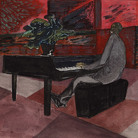 Dal 5 November 2025 al 1 March 2026
Asti | Palazzo Mazzetti
Dal 5 November 2025 al 1 March 2026
Asti | Palazzo Mazzetti
PAOLO CONTE. Original
-
 Dal 28 October 2025 al 15 February 2026
Brescia | Pinacoteca Tosio Martinengo
Dal 28 October 2025 al 15 February 2026
Brescia | Pinacoteca Tosio Martinengo
Peter Paul Rubens. Giovan Carlo Doria a cavallo
